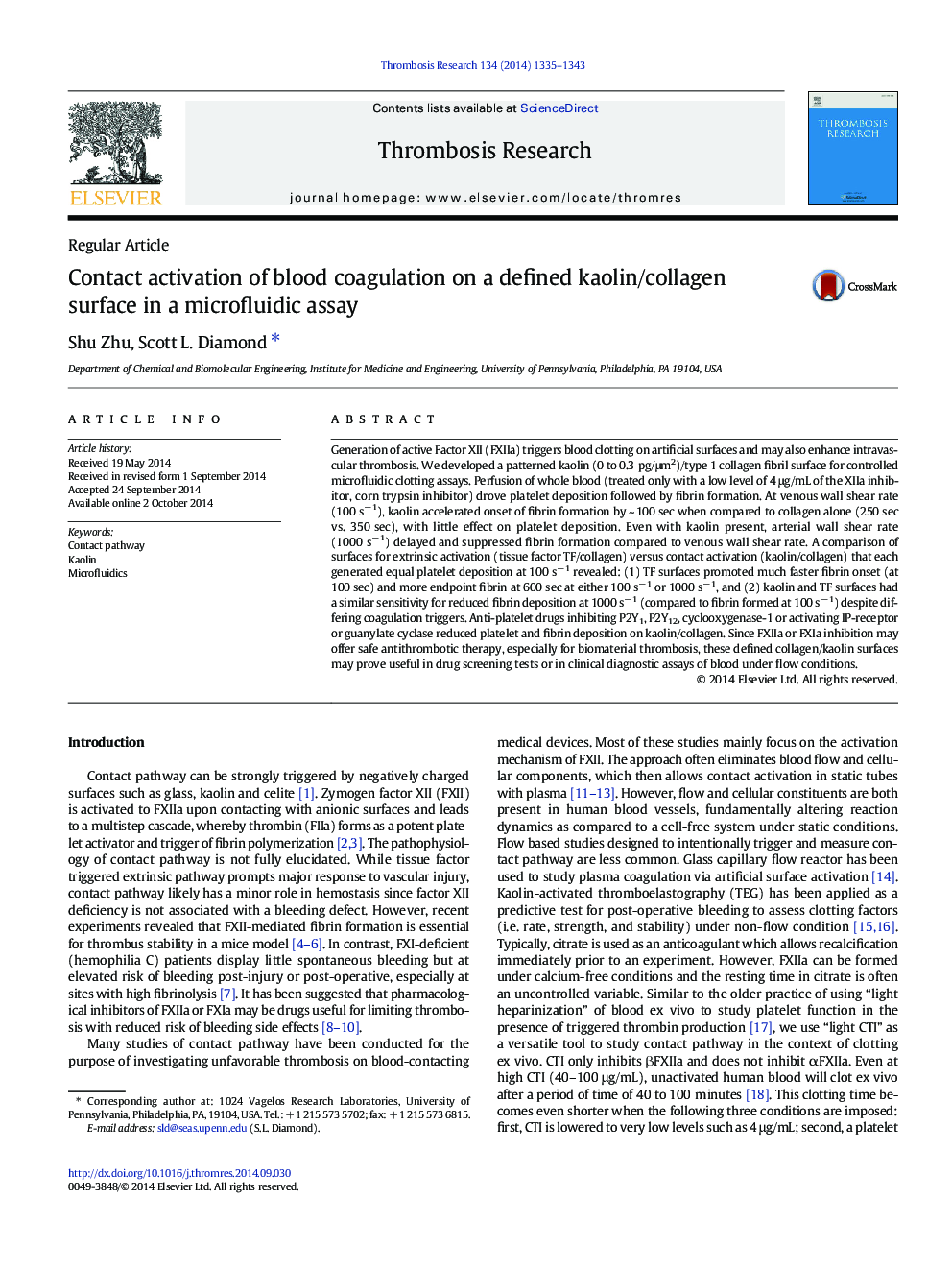| Article ID | Journal | Published Year | Pages | File Type |
|---|---|---|---|---|
| 6002242 | Thrombosis Research | 2014 | 9 Pages |
â¢Biased microfluidic model activating contact pathway on a defined kaolin/collagen surface.â¢Alteration in flow condition (shear rate, transthrombus pressure) can affect activity of contact pathway.â¢Contact pathway is less efficient in prompting thrombin generation compare to extrinsic pathway.â¢This assay is sensitive to the inhibitory effect of multiple antithrombotic therapies.
Generation of active Factor XII (FXIIa) triggers blood clotting on artificial surfaces and may also enhance intravascular thrombosis. We developed a patterned kaolin (0 to 0.3 pg/μm2)/type 1 collagen fibril surface for controlled microfluidic clotting assays. Perfusion of whole blood (treated only with a low level of 4 μg/mL of the XIIa inhibitor, corn trypsin inhibitor) drove platelet deposition followed by fibrin formation. At venous wall shear rate (100 sâ 1), kaolin accelerated onset of fibrin formation by ~ 100 sec when compared to collagen alone (250 sec vs. 350 sec), with little effect on platelet deposition. Even with kaolin present, arterial wall shear rate (1000 sâ 1) delayed and suppressed fibrin formation compared to venous wall shear rate. A comparison of surfaces for extrinsic activation (tissue factor TF/collagen) versus contact activation (kaolin/collagen) that each generated equal platelet deposition at 100 sâ 1 revealed: (1) TF surfaces promoted much faster fibrin onset (at 100 sec) and more endpoint fibrin at 600 sec at either 100 sâ 1 or 1000 sâ 1, and (2) kaolin and TF surfaces had a similar sensitivity for reduced fibrin deposition at 1000 sâ 1 (compared to fibrin formed at 100 sâ 1) despite differing coagulation triggers. Anti-platelet drugs inhibiting P2Y1, P2Y12, cyclooxygenase-1 or activating IP-receptor or guanylate cyclase reduced platelet and fibrin deposition on kaolin/collagen. Since FXIIa or FXIa inhibition may offer safe antithrombotic therapy, especially for biomaterial thrombosis, these defined collagen/kaolin surfaces may prove useful in drug screening tests or in clinical diagnostic assays of blood under flow conditions.
